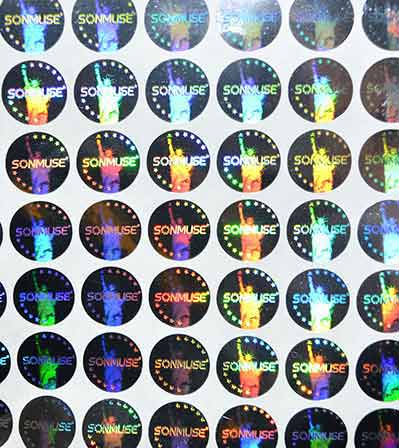The VOID Hologram could be listed in a photoresist that later evolution includes the routine because a microscopic surface aid. From this relief routine a nickel copy is derived from electroplating. Lean nickel copy can be used to press on this surface routine to a plastic foil for an elevated temperatures. This practice is known as hologram embossing. The embossed pattern at the foil is given with a rather thin reflective coating of aluminum or a different metal, like chromium or gold, which then transforms the transmission hologram to a reflection hologram. Despite this thinness of the metal coating, these embossed reflection holograms are totally opaque. Semitransparent options can be reached by the use of high-refractive-index coating (ZnSe, TiO2) and partially metallized layers, which leave so-called semitransparent overlays or translucent holograms.
Holograms can be applied to your product as an Hologram Label, hot-stamped on a product, utilized as a ribbon or tape, or utilized as a over-laminate of a item.
